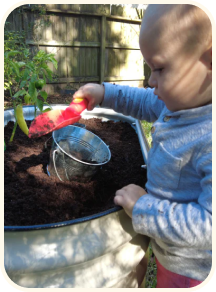The Prickly Palate: Edible Cacti from the Garden
Most of us know the issues associated with a picky eater, the toddler who insists on mac and cheese every day or the husband who never grew out of his high-school junk-food habits and thinks a Costco hot dog is both a bargain and fine dining.
But what about prickly eaters?
By that, we mean people whose cuisine includes edible cacti and succulents. Granted, the planet might not be ready for a drive-through saguaro stand (although the image of the cactus as a mascot, with its arms stretched out like a car dealership tube man frozen in time, is quite appealing).
But if you’ve ever had a prickly pear margarita or picked up a dragon fruit at the grocery store, you’re part of the cacti-consuming clan.
Old roots
Edible cacti and succulents were a mainstay of indigenous diets, especially in the Americas (including what is now Mexico, Central America, South America, the U.S. Southwest, and the Caribbean Islands).
Because of the plants’ ability to weather drought conditions, they were a reliable source of sustenance in arid or harsh environments.
Cacti were also used to make medicine, tools, and clothing, with some spines serving as needles and fibers from certain plants woven into textiles and baskets.
They’re still found on tables in those original regions and have become popular in the Mediterranean, particularly southern Italy and Sicily. Today, not many “all-American” recipes call for cacti or succulents, but they are catching on among trend-setting chefs and adventurous home cooks for a couple of good reasons.
One is flavor. Despite their often-off-putting exterior, edible cacti can be sweet inside (think dragon fruit), mild (like nopales, the pad of the prickly pear), or peppery (like purslane), meaning they’re at home in various dishes.
Second, they’re healthy, full of essential nutrients, including vitamins, minerals, fiber, and antioxidants.
And third, they’re versatile. You can eat them raw, cooked, juiced, or dried.
New experiences

Ready to put a little something new on your plate? Here are some edible cacti and succulents to try.
- Prickly pear cactus (Opuntia): Both the pads (nopales) and egg-shaped fruit (tunas) are edible. In Mexico, cooks add nopalitos to salads, soups, stews, and stir-fries. They can also be grilled and served as a side dish. Tunas, which are sweet and juicy like a kiwi, can be eaten fresh or made into jams, jellies, syrups, and desserts. Prickly pear is the most commercial important cactus.
- Dragon fruit (Hylocereus): Mildly sweet and slightly floral, the white or pink flesh of the dragon fruit is sometimes described as cross between a kiwi and a pear. The texture is slightly crunchy due to the small black seeds. Dragon fruit can be used in smoothies or fruit salads, made into a pastry filling, and can even be the base for a unique ice cream.
- Barrel cactus (Echinocactus): The edible flesh of the barrel cactus is sweet and slightly tangy (and spineless). It adds a lemony twist to everything from stews to cakes, and you can toast and grind the seeds to make flour.
- Saguaro cactus (Carnegiea gigantea): The Desert Botanical Garden calls these giants the “grocery store in the desert” because each plant can produce up to 150 fruit in season. The fruit is quite sweet and can be eaten out of hand or cooked into syrup or jam. The seeds can be eaten raw or, like barrel cactus, ground into flour.
- Strawberry hedgehog cactus (Echinocereus engelmannii): As its name suggests, this cactus produces small red fruits that resemble strawberries (and, thankfully, not hedgehogs) and taste like them, too (again, thankfully, not hedgehogs). Theys can be eaten raw or, like many other cacti, processed into jams, jellies, desserts, and syrups.
- Cholla cactus: The cholla buds, which are the tender, young segments of the plant, have been described as tasting like a “a fantastical combination of green bean, artichoke heart and asparagus.” If that description doesn’t impress you, consider this: the buds are so full of calcium that eating a four-ounce serving provides the same nutrient value as drinking a glass of milk.
Be a choosy picker

Misidentification can be toxic and some cacti (like the cholla) are downright dangerous to deal with: their prickly spines are considered the desert’s most painful, and the plant frequently causes dermatitis when handled.
Safer bets are supermarkets, farmers markets that source locally grown edible cacti, and cactus nurseries whose staff can help you learn how to identify and consume the plants.
If you’re determined to do a wild edible cacti hunt, do as much research as possible ahead of time, including talking to local experts. For at least the first couple of times, go out with a knowledgeable guide who can help you avoid mistakes. And pick responsibly: Don’t take more than you need or so much that the plant will be unable to reproduce or survive.
Most of all, enjoy the fact that you’re on the leading edge of American dining. But don’t be surprised if the Costco cholla dog is being test-marketed somewhere.





























Leave a comment